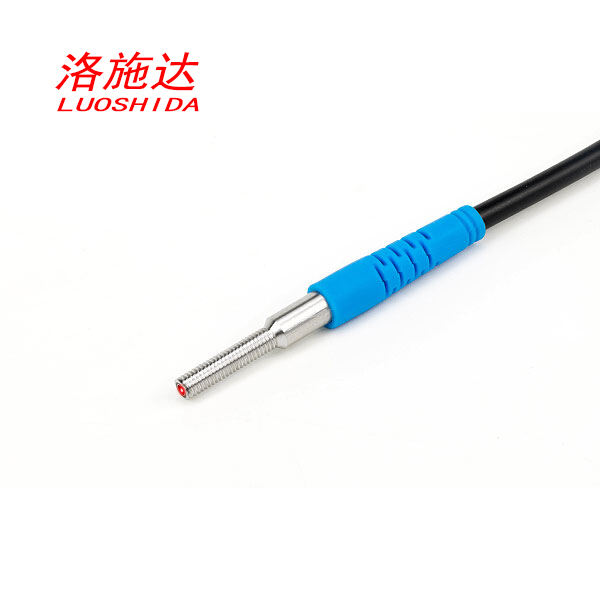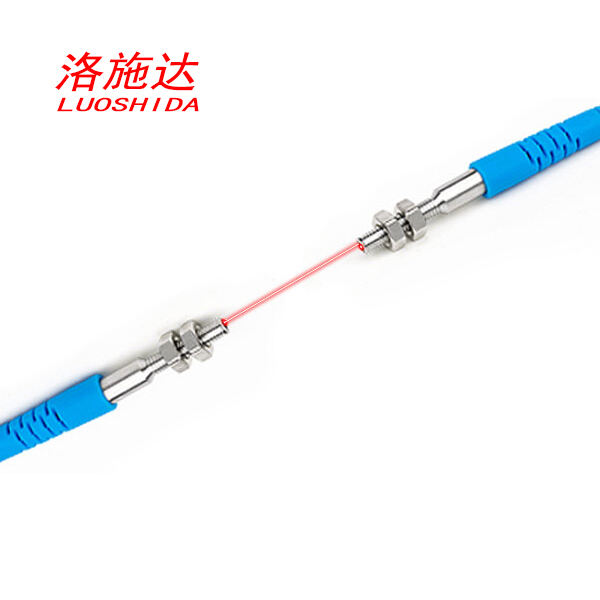Откройте сенсоры Matrix Fiber для многоточечной детекции с высокой точностью
Понимание технологии волоконно-оптического датирования
Основные принципы систем фотоэлектрических датчиков
Фотоэлектрические датчики играют ключевую роль в волоконно-оптических сенсорных технологиях. Они работают, испуская световые лучи и обнаруживая объекты, когда эти лучи отражаются обратно или каким-либо образом прерываются. Способность этих устройств преобразовывать оптические сигналы в электрические делает их довольно универсальными для различных промышленных применений. Обычно их подразделяют на три основные категории: отражательные, датчики типа «сендвич» (с отдельным излучателем и приемником), и датчики близости. Отражательные модели по сути измеряют количество света, отражающегося от объекта, чтобы определить расстояние до него. Датчики типа «сендвич» состоят из двух компонентов — один излучает световой луч, а второй определяет, прерывает ли что-то этот луч. А датчики близости следят за изменениями уровня окружающего света, чтобы определять наличие близко расположенных объектов, без необходимости прямой видимости.
Эти датчики играют важную роль в автоматизации и системах безопасности, поскольку они обнаруживают объекты с поразительной точностью и надежностью. Когда датчик может определить, есть ли что-то или нет, это существенно влияет на производственные цеха. Производство становится более плавным, когда машины точно знают, что происходит вокруг них, и все становятся безопаснее. Мы видим эту технологию повсеместно в конвейерных лентах, производственных линиях и промышленных роботах, перемещающих детали. Самое важное — это то, как эти датчики улучшают повседневные операции, защищая работников от опасностей во время рутинных задач.
Роль лазерных датчиков расстояния в точном обнаружении
Лазерные датчики расстояния стали незаменимыми для точных измерений в различных отраслях. Они работают, испуская лазерные лучи для вычисления расстояний с поразительной точностью. По сравнению со старыми методами измерений, эти современные датчики допускают значительно меньше ошибок, даже при измерении больших расстояний. Их точность особенно важна в тех местах, где правильные измерения критичны — например, на фабриках и строительных площадках. Когда компании устанавливают эти датчики на своих производственных линиях или строительных объектах, обычно наблюдается повышение эффективности рабочих процессов, уменьшение количества отходов во время операций и улучшение общего качества продукции на всех этапах производства.
Сочетание лазерных технологий с волоконно-оптическими датчиками действительно повышает функциональные возможности этих устройств, что объясняет, почему на них так полагаются многие передовые отрасли. Например, в аэрокосмическом производстве даже незначительные ошибки измерений имеют большое значение. Производители электроники также сильно зависят от этих датчиков, поскольку их работа требует предельной точности в процессах сборки. То, что выделяет эти датчики, — это их способность мгновенно предоставлять информацию о реальном положении объектов в пространстве. Эта функция стала практически стандартной в современном интеллектуальном оборудовании в различных областях, способствуя продвижению технологических возможностей вперед высокими темпами.
Основные характеристики матричных оптоволоконных датчиков
Возможности многоточечного обнаружения
Датчики волоконной матрицы оснащены действительно классными функциями многоточечного обнаружения, которые позволяют им одновременно отслеживать несколько участков. Это особенно важно в сложных промышленных условиях, где контроль нескольких параметров одновременно может означать разницу между бесперебойной работой и потенциальными проблемами безопасности. Когда эти датчики собирают информацию с различных точек, они дают операторам более четкое представление о происходящем, что помогает принимать решения на основе данных в реальном времени. Возьмем, к примеру, производственный цех. Возможность для рабочих следить за множеством компонентов и состоянием окружающей среды по мере их изменения означает меньшее количество сбоев в производстве и более высокую общую эффективность. Предприятия, использующие эту технологию, работают стабильнее, поскольку проблемы выявляются заранее, до возникновения серьезных нарушений.
Сравнение с индуктивными датчиками приближения
Индуктивные датчики положения хорошо подходят для обнаружения металлических объектов без непосредственного контакта, но матричные волоконные датчики обладают дополнительными преимуществами в плане обнаружения. Матричные датчики способны распознавать самые разные материалы, а не только металлы, что значительно расширяет сферы их применения. Представьте места, где условия эксплуатации крайне тяжелые — именно там матричные датчики проявляют свои сильные стороны, в отличие от индуктивных аналогов, которые под давлением могут давать сбои. Матричные датчики продолжают надежно работать даже при резких перепадах температур или повышенной влажности. Кроме того, компаниям нравится, что такие датчики со временем позволяют экономить средства, продолжая демонстрировать отличные результаты. Многие производственные предприятия уже перешли на них, поскольку интеграция этих датчиков в устаревшие системы не так сложна, как это может показаться, что делает их отличной заменой традиционным датчикам положения, которые использовались ранее.
Решения на основе лазерных датчиков DC M3 Ultra-Mini
Диффузный лазерный датчик (Модель серии LTD)
Сенсоры серии LTD от DC M3 Ultra-Mini работают иначе, чем большинство лазерных сенсоров, поскольку используют специальную технологию диффузного отражения для обнаружения объектов. Особенность этих сенсоров заключается в том, что им не требуется точное выравнивание для корректной работы. Этот уникальный метод хорошо работает в различных условиях заводов. Несмотря на свои маленькие размеры, эти сенсоры обладают высокой эффективностью, что позволяет устанавливать их в труднодоступных местах, куда не помещается более крупное оборудование. Именно поэтому многие производители монтируют их в ограниченных пространствах между машинами или вдоль конвейерных лент. Испытания показали, что эти сенсоры обнаруживают объекты с впечатляющей точностью, что особенно важно для менеджеров предприятий, стремящихся поддерживать бесперебойную и безошибочную работу производственных линий.
Лазерный датчик в проходном режиме (Модель серии LTT)
Датчики серии LTT работают за счет прямого прерывания лучей света, что обеспечивает надежные результаты при обнаружении объектов. Эти лазерные датчики с прямым лучом особенно эффективны в сложных ситуациях, связанных с нестабильным освещением, например, на строительных площадках на закате или в складах с мерцающим светом. Их способность работать в таких условиях настолько эффективна, что большинство конкурентов просто не могут соответствовать этим показателям в сложных ситуациях. Например, в производственных цехах многие предприятия перешли на использование LTT после того, как сталкивались с ложными срабатываниями при использовании более дешевых аналогов. Предприятия пищевой промышленности также сообщают о меньшем количестве ошибок, особенно в ночные смены, когда фоновое освещение постоянно меняется. То, что их отличает, это не только технические характеристики, но и стабильная работа день за днем без необходимости постоянных регулировок.
Применения лазерных датчиков перемещения
Примеры использования в промышленной автоматизации
Лазерные датчики перемещения действительно важны для автоматизации промышленных процессов, особенно когда речь идет о контроле качества и точном измерении позиций. Эти устройства обеспечивают чрезвычайно точные измерения расстояний, что позволяет производить продукцию, соответствующую заданным параметрам, а значит, улучшает качество конечного продукта. Информация в реальном времени, предоставляемая этими датчиками, позволяет управляющим заводами оперативно корректировать производственные линии. Это означает меньший расход материалов и более быструю работу в целом. Согласно промышленной статистике, компании, использующие лазерные измерительные технологии в своих автоматизированных системах, как правило, наблюдают улучшения в том, насколько хорошо компоненты пропускают свет, а также значительную экономию средств, поскольку требуется меньше исправлений ошибок в дальнейшем. Вот почему большинство современных производственных предприятий теперь рассматривают эти датчики как обязательное оборудование для поддержания конкурентоспособности на рынке.
Преимущества над традиционными датчиками приближения
Лазерные датчики перемещения обладают определенными реальными преимуществами по сравнению с традиционными датчиками близости, особенно в плане точности и надежности. Когда эти датчики обеспечивают такую степень точности, рабочие процессы в целом становятся более гладкими и эффективными. Мы получаем улучшенный контроль качества и сокращение времени, затрачиваемого на устранение возникающих проблем на более поздних этапах. Традиционные датчики близости просто не обеспечивают необходимой точности при измерении расстояний на значительном удалении. Здесь и проявляются преимущества лазерных датчиков перемещения, поскольку они хорошо работают на гораздо более длинных дистанциях. Это позволяет фабрикам устанавливать их в любом необходимом месте, не сталкиваясь с надоедливыми ограничениями по пространству, характерными для других систем. Анализируя данные, собранные в реальных условиях эксплуатации, можно отметить, что лазерные датчики выходят из строя реже, а также пользователи сообщают о более высоком уровне удовлетворенности их работой. Для тех, кто работает в сложных промышленных условиях, где критически важно получать точные измерения, такие датчики действительно играют решающую роль. Неудивительно, что в последние годы множество производственных предприятий перешли на их использование.

 EN
EN
 AR
AR
 FR
FR
 DE
DE
 IT
IT
 JA
JA
 KO
KO
 PT
PT
 RU
RU
 ES
ES


